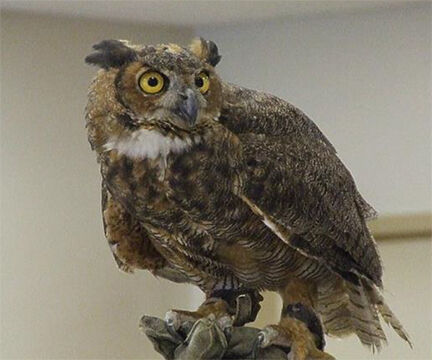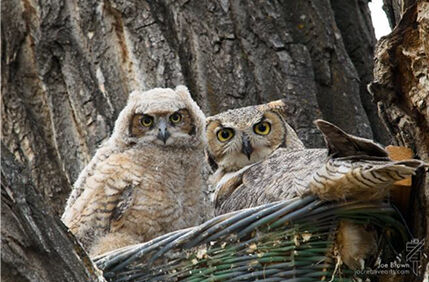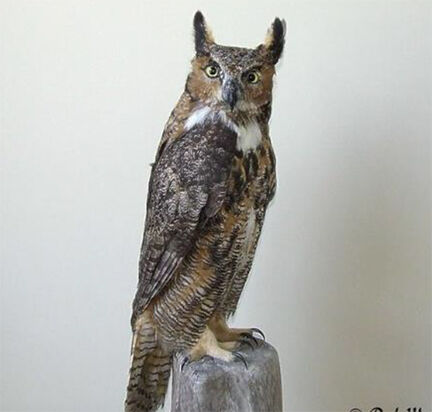Image

WARREN COUNTY PARKS, OH -- The Great Horned Owl is the largest of eight species of owls that spend time in Ohio. It has a very regal appearance with large round forward-facing eyes and tufts at the top of the head called ears even though they are just feathery adornments. Their actual ears are behind the eyes on the sides of the head.
These owls are rather quiet and reclusive during the daylight hours reserving the darkness of night for most of their hooting and hunting. Their voice is a distinctive soft, but resounding, “who, who-who, who, who.” Often a pair of them can be heard communicating back and forth as they travel through their favorite hunting territory.

They are considered to be apex predators that will eat almost anything that moves as long as it isn’t bigger than them. This includes raccoons, possums, skunks, rabbits, groundhogs, squirrels and other small rodents. Even small cats and dogs have been known to show up on their menu.
Great Horned Owls begin nesting in the dead of winter, January or February. They do not go to the trouble of building a nest of their own; rather, they utilize an abandoned nest that hawk or other large species constructed in a previous season.
 Photo by Joe Brown
Photo by Joe BrownAnother favorite nest site is a snag where the top of a large old tree has broken off 30 feet or more above ground level. No leaves or twigs are added to the nest. Two or three eggs are laid in a slight depression and are incubated for about a month before they hatch. The female owl successfully keeps the eggs warm even in below zero winter temperatures.
The Great Horned Owl is doing well in Ohio living in woodlots, parks, agricultural areas, riparian areas, and old cemeteries. It is not migratory as some species of owls are. They do like their privacy, and it’s not every day that we get to see one, so consider yourself lucky if you do.

Above is the Warren County Park District’s taxidermy specimen of a Great Horned Owl. Dave Woehr found it in the road and donated it to the Park District, where they obtained the proper state and federal permits and had it professionally preserved. It now serves as one of the Park District’s educational ambassadors, and hundreds of community members each year are able to appreciate its beauty up close.
To learn more about this species, click here to visit page 25 of the Ohio Division of Wildlife’s Owls of Ohio Guide.